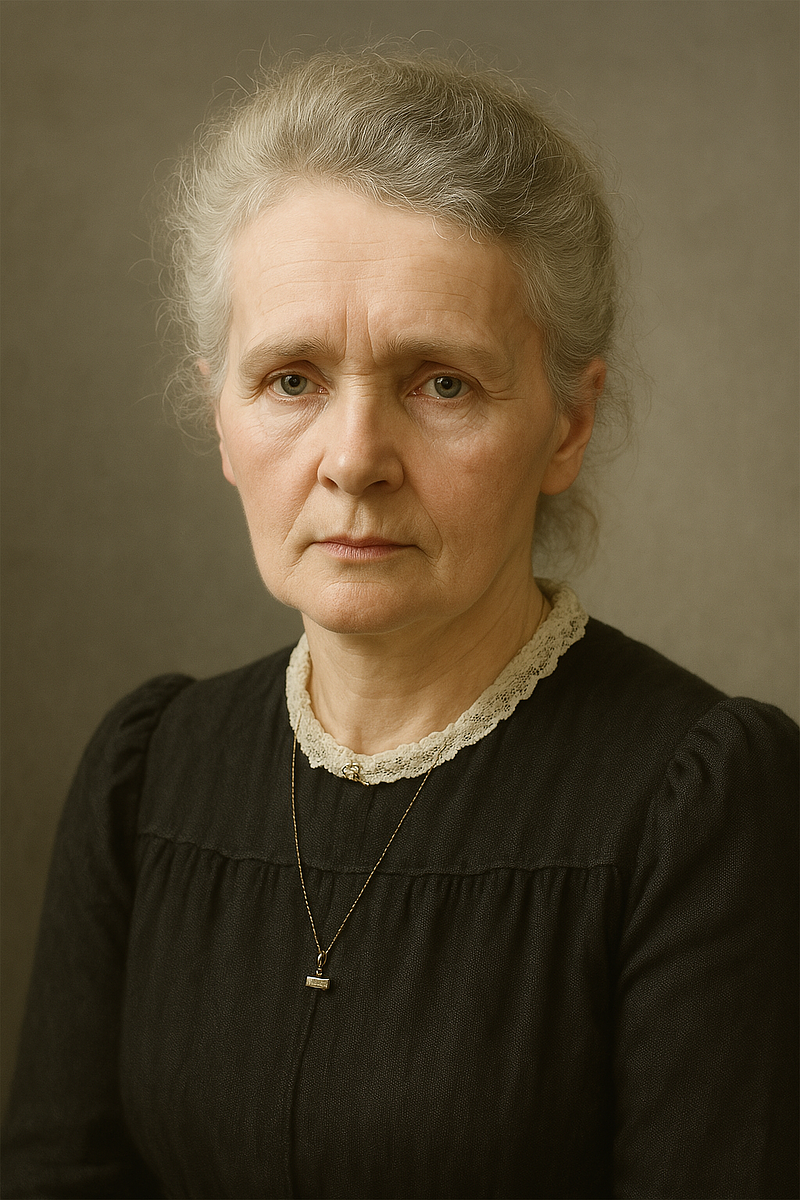5 months ago
[Image Type: Ultra-realistic color photograph / Highly detailed realistic oil painting / High-resolution digital portrait] of Marie Curie.
Facial Details:
Face Shape: Oval-shaped, with slightly prominent cheekbones and a soft jawline.
Skin Tone: Fair complexion with a subtle rosy undertone, showing natural skin texture and pores. Fine expressive lines are visible around the eyes and mouth, and subtle horizontal lines on the forehead (especially in older depictions).
Hair:
Color: A blend of light grey, silver, and pale blonde, with remnants of subtle underlying light brown strands. In younger depictions, the hair would be light brown or dark blonde.
Style: Neatly gathered into a loose bun, chignon, or "messy updo" at the back of the head, with soft, wispy strands framing the forehead and temples. In younger images, the hair might be fuller around the head or styled upwards.
Eyes:
Color: Pale light blue or blue-grey, with a calm, discerning, and deep gaze, reflecting intelligence and seriousness.
Shape: Almond to slightly round, with slightly prominent upper eyelids.
Eyelashes and Eyebrows: Sparse eyelashes; eyebrows are thin to medium, naturally arched, and light-colored (tending towards grey/blonde), neatly groomed.
Nose: Straight, medium-sized, with a slightly rounded tip, defined by soft shadow lines.
Mouth and Lips: Medium-full lips, natural rosy-pink color, often closed with a calm or serious expression. Fine lines may appear around the mouth (especially in older depictions).
Chin: Rounded and soft, proportionate to the face shape.
Distinguishing Features: A subtle dimple on the chin may be present. Her facial expression conveys focus and deep thought.
Body and Clothing Details (if more than the face is included):
Body Build: Neck, shoulders, and upper chest are visible.
Clothing: Often depicted in simple, practical attire typical of her era, such as:
A dark-colored (black, navy, or dark brown) dress or jacket made of a dense fabric.
Details like a high white collar, a decorative collar (as in younger photos), or simple lace embellishments on the shoulders or sleeves may be present.
A simple, thin necklace with a small pendant (could be a locket or a bar-shaped pendant).
Background and Lighting:
Background: Simple, often a plain neutral-colored wall (grey, beige, light brown) or a softly blurred, indistinct background, with gentle color gradients providing depth without distraction.
Lighting: Soft, even lighting illuminating the face, with very subtle shadows highlighting features without being harsh. The light source might be from the front or slightly to one side.
Overall Mood/Feeling: Calm, serious, contemplative, and confident expression, reflecting her intelligence and profound thinking.
```


